
- •Англійська мова
- •Text a. Clothes express me
- •Text b. To sew, or buy ready-to-wear?
- •Alternative ways of dressing well
- •Unit 2 Text a. Getting Ready to Sew
- •Text b. Fabrics
- •Text a. Sewing Machine
- •Inserting the Upper Thread.
- •Text b. Sewing Tools and Aids
- •Text a: Machine Stitches
- •Regulation Stitch
- •Basting Stitch
- •Stitching for Gathering
- •Fig.3Fig.4 Stitching for Reinforcement
- •Zigzag Stitch
- •Running Stitch
- •Basting Stitch
- •Back-Stitch
- •Pinning
- •Stitching
- •Trimming
- •Grading
- •Clipping
- •Unit5 Text a: Sleeves
- •Two-piece Set-In Sleeve
- •Puffed Sleeve
- •Shirt Sleeve
- •Dolman Sleeve
- •Text b: Cuffs
- •Straight Cuff Closed at Ends
- •Straight Cuff with Open Ends
- •Shaped Cuff Closed at Ends
- •Shaped Cuff with Open Ends
- •Cuff Applied with Bias Facing
- •Shirt Cuff
- •French Cuff
- •Round Collar
- •Pointed Collar
- •Sailor Collar
- •Band Collar
- •Patch Pockets
- •Set-in Pockets
- •Inner Pillow Form
- •Pillows without Boxing
- •Pillows with Boxing
- •Shaped Valances
- •Soft Valances
- •Text c: Pillows Covers
- •Separate Pillow Throw, Sewn to Spread
- •Bolster Roll
Clipping
Most curved seams, such as necklines, princess seam lines, collars, kimono sleeves at the underarm, require clipping in order to make the seam lie flat. On an inward curve, grade seam allowances and clip to the stitching line about 1/4 inch apart. On outward curves, grade seams and make notches to line of stitching about 1/4 inch apart (Fig.24, Fig.25).
Exercise 1. Answer the following questions:
Why should you use pinning?
How are plain seams pinned correctly?
What prevents the two fabrics from shifting on the seam line while you are basting or stitching?
What seams should be machine-basted?
How does a traveling foot of the sewing machine work?
What does grading a seam allowance mean?
Why do most curved seams require clipping?
Exercise 2. Find the English equivalents of such words from the text:
Закріплення, вставляти, надійно, коливатися, збиратися складками, підрізання, об’єм (маса), знищити (усунути), товстий край.
Exercise 3. Match each word in the left-hand column with the best meaning in the right-hand column.
Trimming a) means that the layers of fabric are cut to different
widths, with the wider seam allowance next to the
outside fabric.
Grading b) is necessary for most curved seams to make the
seam lie flat.
Clipping c) means that you cut away both allowances to an
even width.
Exercise 4. Translate into English:
Шиття швів без їх закріплення вимагає великого вміння та уваги.
Якщо це шов, який не потребує додаткової примірки, він прошивається постійно.
Шви, які можуть потребувати підгонки слід виконувати наметувальними машинами.
Більшість машин обладнані рухомою лапкою, яка коливається назад і вперед над шпильками, так що можна прошити весь шов і після шиття шпильки витягнути.
Підрізання швів означає, що тобі потрібно відрізати припуск на шви на однакову ширину.
Більшість кривих швів потребують надсікання для того, щоб заставити шви лежати рівно.
Text D: Types of Seams
Key Words and Phrases:
French seam – подвійний (французький) шов, flat-fell seam – запошивний шов в замок, eased to – прилаштований до, binding – обшитий, shrink out – декатирувати, зсідання під утюгом, top-stitched seam – розстрочувальний шов, lapped seam – накладний шов із закритим зрізом, sturdy – міцний, сильний, hemmed-fell seam – підрублювально-запошивний шов, welt seam – настрочний шов із закритим зрізом, mock-French seam – імітація (псевдо) подвійного шва, piped seam –обкантувальний шов.
In garment construction there are several types of seams. The type to use in a garment is determined by the fabric and the design of the garment. For example, if you are working with a sheer fabric, you'll use a French seam, which won't show through the sheer fabric. When making a man's sport shirt, the flat-fell seam is used since it is stronger and will hold up under the stress given this sort of garment. You should know the various types of seams and how to construct them, as well as where they are commonly used in a garment.
Plain seam. The seam most frequently used to join two sections of fabric. Pin two pieces of fabric, right sides together, and stitch. Sometimes backstitches are used for this joining. Press seam open and finish seam edges (Fig.26).
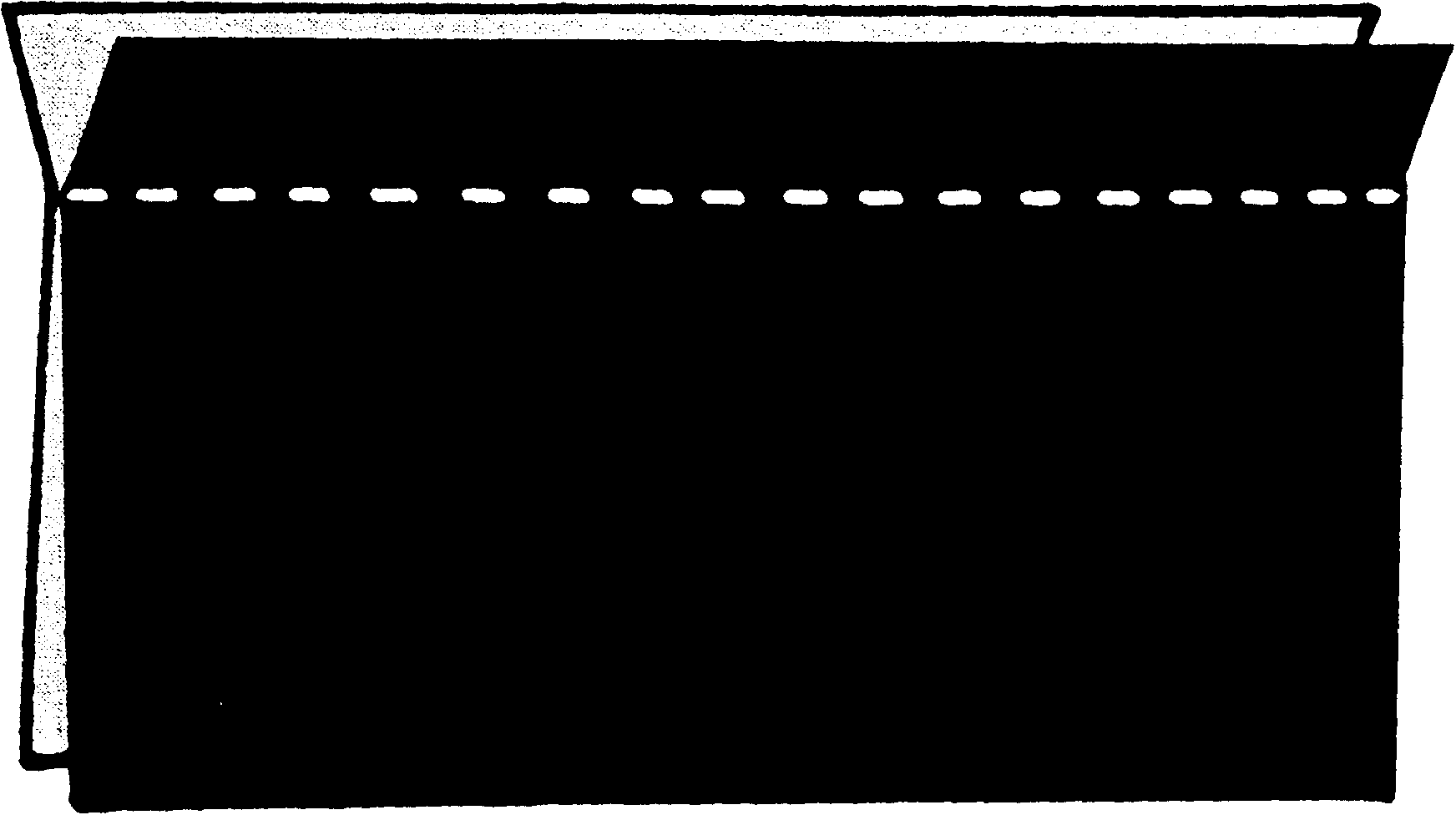

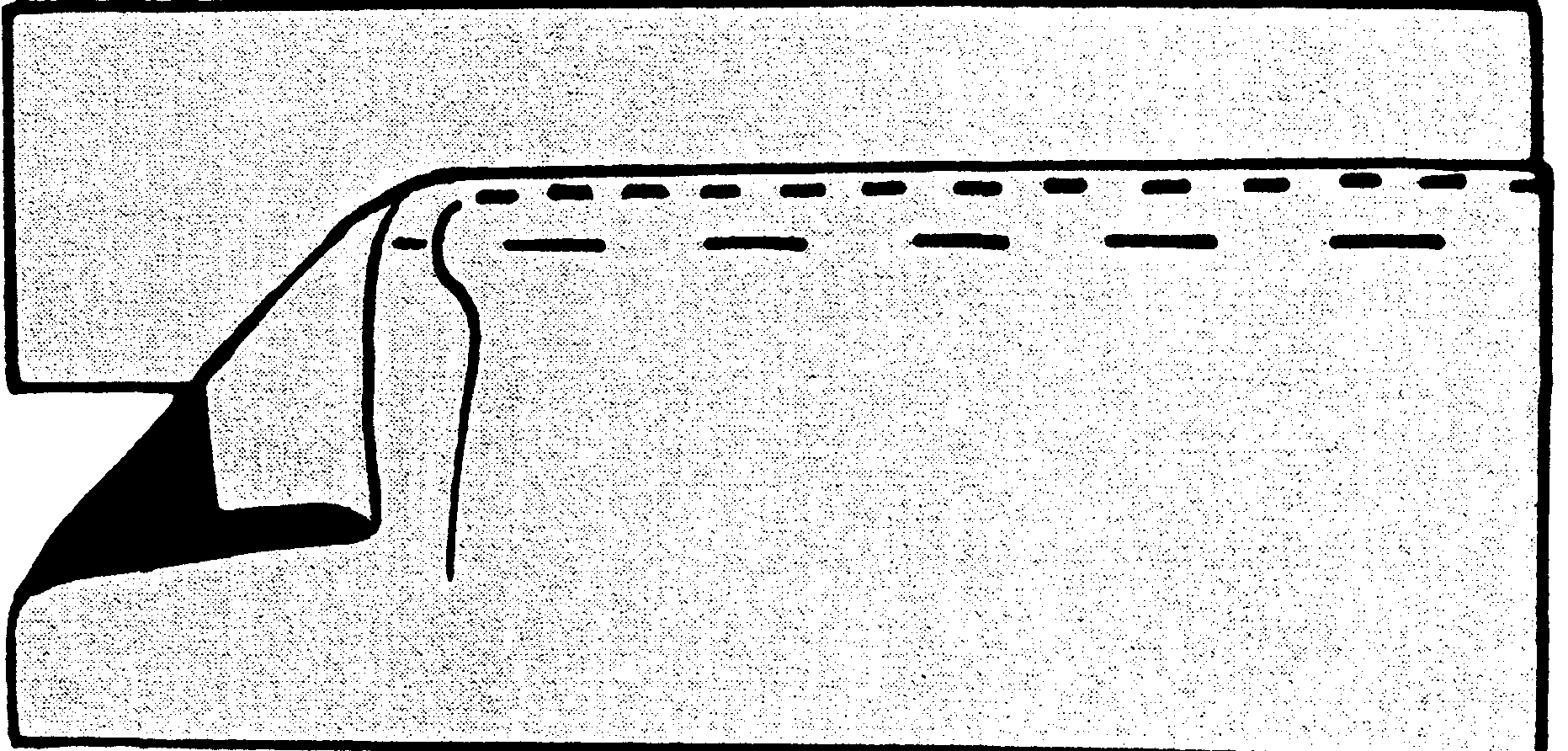
Fig.26 Fig.27 Fig.28
Plain eased seam. When two pieces to be seamed together are slightly unequal in length, the longer piece must be eased to the shorter. Although this easing provides shaping for a curved area of the body, the seam should appear smooth. It is often found at the bust, elbow and shoulder seam of a garment. To construct the seam, place a row of long stitches (6 to 10 to the inch) on the seam line of the longer piece of fabric between the markings for easing. Pull up the bobbin thread of this row of stitches until the seam edge of the longer piece is the same length as the shorter one. Distribute the ease evenly and steam-press to shrink out any fullness at the seam line. Pin the two pieces together and stitch the seam, keeping the eased seam on top as you stitch.
Plain seam joining bias piece and straight piece. If one section of fabric to be joined at a seam is bias and the other on the straight grain, place the bias section on top; ease if necessary and stitch with the bias section up toward you. To control stretching of bias seams, place woven seam binding along the seam line and stitch the tape to the seam as you are stitching the seam.
Plain seam joining napped fabric and smooth fabric. When one section to be joined in a seam is napped and one is smooth fabric, place the smooth section on top. Stitch with smooth fabric up toward you.
Plain seam, top-stitched. A top-stitched seam not only adds a decorative effect to a garment, it also provides a strong seam construction. It is similar in appearance to the lapped seam. Stitch a plain seam and press the seam open first, then press both seam allowances toward the section to be top-stitched. Place a row of stitching close to the seam line, stitching on the right side of the garment through both seam allowances (Fig.27).
Lapped seam. This seam is most often used for yokes and applied pieces such as gussets. One section is lapped over the other and top-stitched. Fold under the seam allowance on the section to be lapped and press flat. Place the sections together, right sides up, matching the fold to the seam line accurately and baste in position. Stitch close to the folded edge through all thicknesses (Fig.28).
Flat-fell seam. This strong, sturdy seam construction is used for sportswear, men's sport shirts, children's clothes and pajamas. Garments, which will receive a great deal of stress or must withstand repeated washing will be sturdier if constructed with flat-fell seams. However, avoid using the construction on bulky fabrics; the seam is thick and difficult to construct in a heavy, bulky fabric. Place the pieces to be joined wrong sides together, and stitch a plain seam. Press the seam to one side and trim the lower seam allowance to 1/8 inch. Turn under the raw edge of the other seam allowance and place over the trimmed edge. Stitch close to the folded edge through all thicknesses (Fig.29).
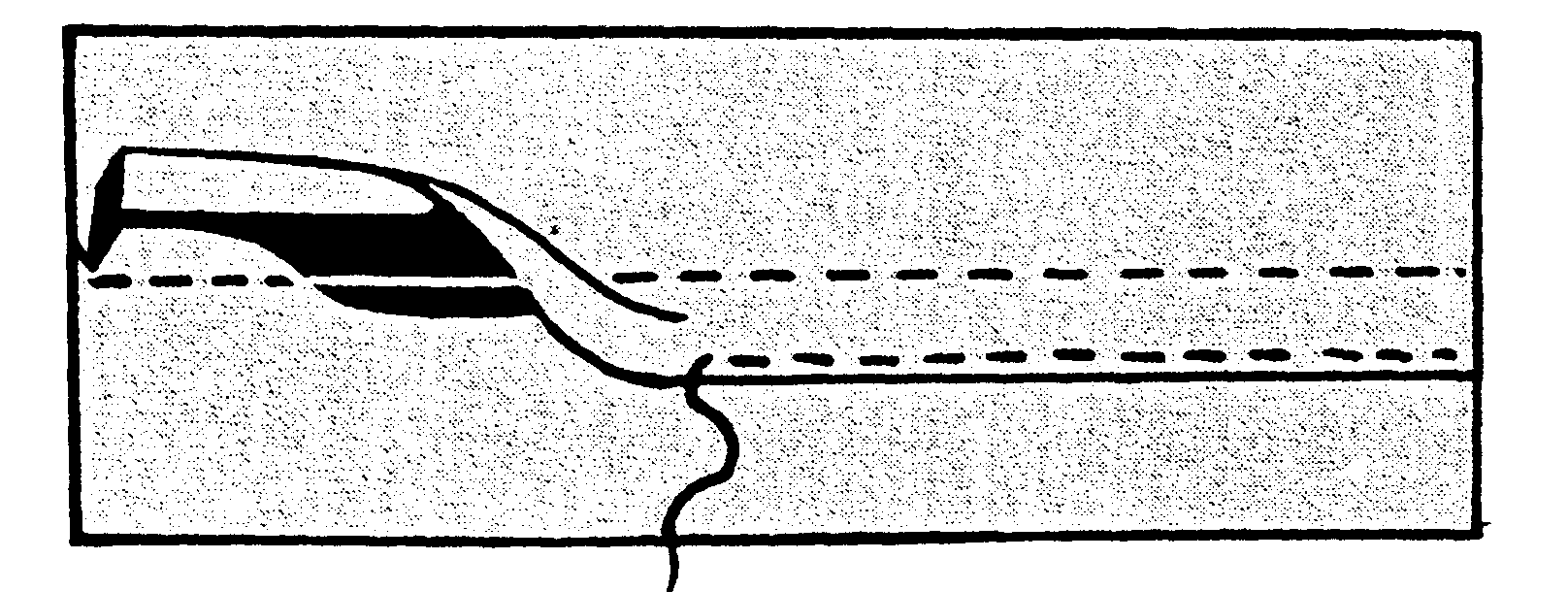

Fig.29 Fig.30
Hemmed-fell seam. This seam is similar to the flat-fell seam and begins with a plain seam on the wrong side. The under layer is trimmed to 1/8 inch and the upper edge is turned under, pinned and slip-stitched by hand, catching only a single thread of fabric. This eliminates machine-stitching on the right side and gives an inconspicuous finished seam on the wrong side (Fig.30).
Welt seam. This seam is similar in appearance to the flat-fell seam on the right side. It is also good for heavy fabrics since it gives a smooth, flat finish without the bulk of a flat-fell seam. First stitch a plain seam, press it open, then press the seam allowances toward one side. Trim the underneath seam allowance to 1/4 inch and press the other seam allowance over trimmed edge. Stitch close to the raw edge (Fig.31).
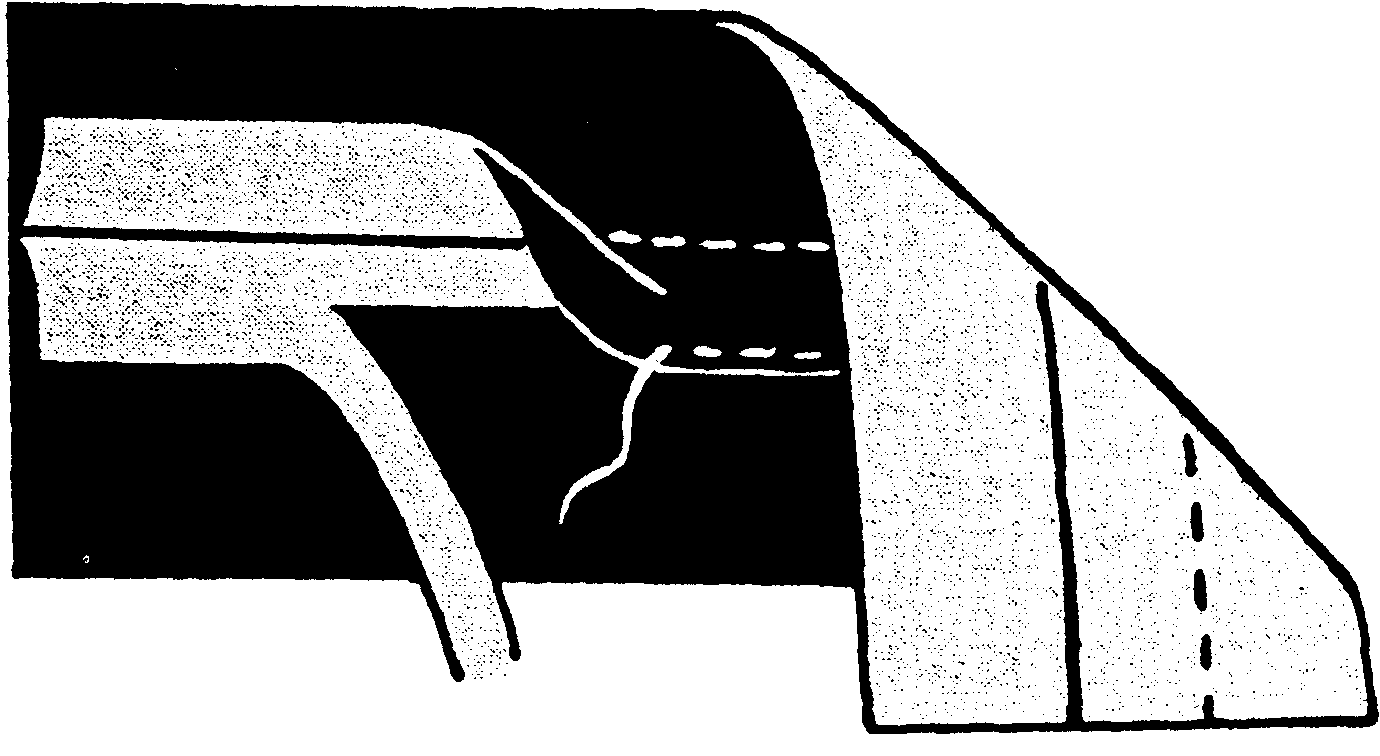
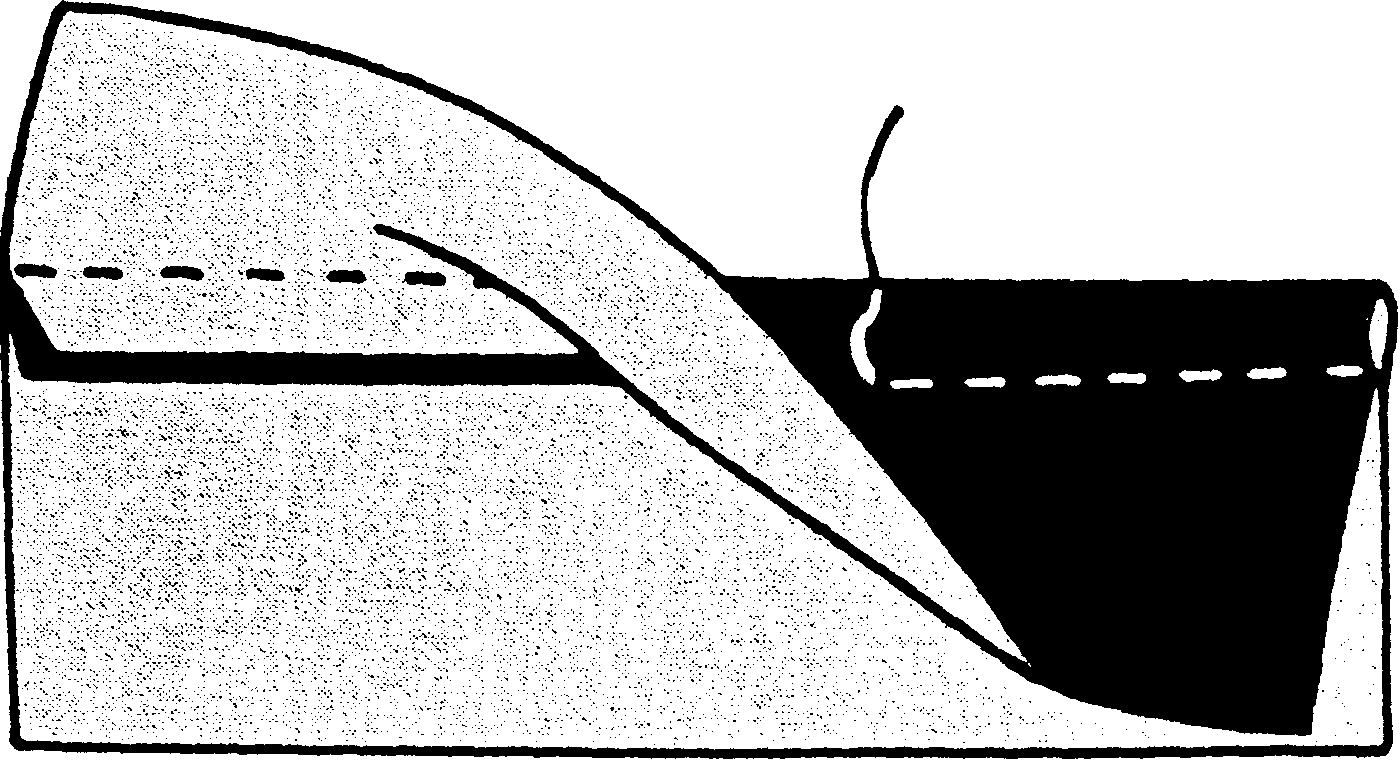
Fig.31 Fig.32
French seam. This is a particularly good seam for sheer fabrics and is used for infants' clothes because it leaves no unfinished seam edges. Place the fabrics, wrong sides together, and stitch a plain seam 3/8 inch from the edge. Trim the seam allowances to 1/8 inch or less. Turn the garment with right sides together and press flat at the seam line. Pin and stitch on the regular 5/8 -inch seam line marking. In infants' clothing, this seam construction is often done by hand (Fig.32).
Mock French seam. This seam is similar in appearance to the French seam and is often used in similar fabrics. It is easier to construct, especially in curved seams, such as those of set-in sleeves. First stitch a plain seam, with right sides of the fabric together. Turn in the raw edges of the seam allowance 1/4 inch toward the center seam line. With the folded edges meeting, stitch them together close to the folded edge (Fig.33).

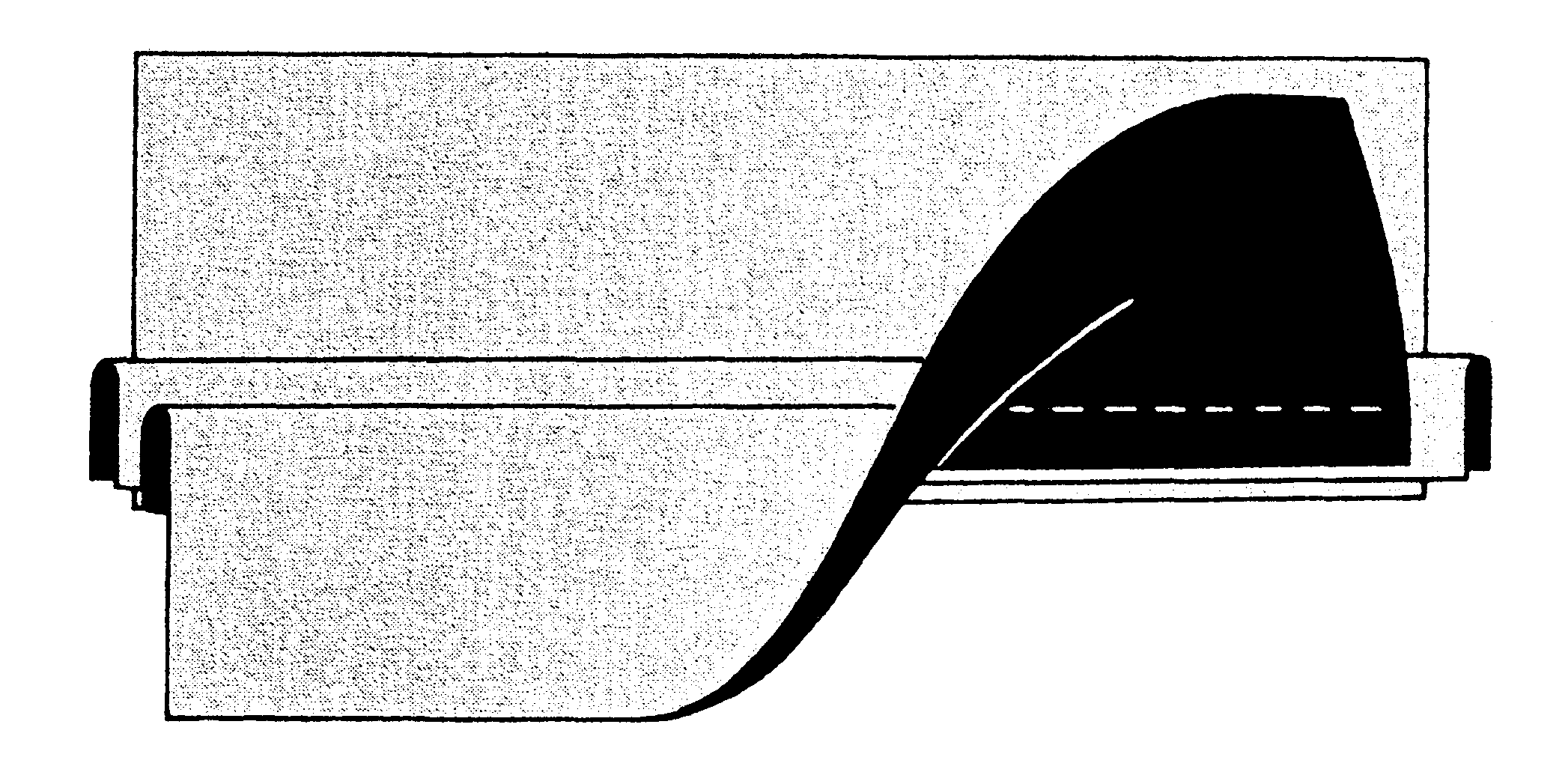
Fig.33 Fig.34
Piped seam. This is a decorative seam often used in neckline seams with a facing and at the waistline. Use a folded bias strip of fabric, ribbon, bias tape or braid. Place it on the right side of one section of the fabric with the fold extending the desired amount beyond the seam line toward the main part of the garment. Baste. Place the other section in position, right sides together, and stitch seam. Press seam allowances to one side (Fig.34).
Exercise 1. Answer the following questions:
What is the type of seam determined by?
What is the most frequently used seam?
How should you join a bias and straight grain piece?
What seam is most often used for yokes and gussets?
Why is a flat-fell seam used for sportswear and children’s clothes?
What seam is particularly good for sheer fabrics?
Where is a piped seam often used?
Exercise 2. Find the English equivalents of such words from the text:
Зшивний шов, проста структура, ворсиста тканина, гладка тканина, кокетка, витримувати, непомітний, вшивати, бажаний, виріз, обшивання (пройми).
Exercise 3. Match each word in the left-hand column with the best meaning in the right-hand column.
Plain eased seam a) is a decorative seam often used in neckline
seams with a facing and at the waistline.
Lapped seam b) is used when two pieces to be seamed
together are slightly unequal in length.
Flat-fell seam c) is most often used for yokes and applied
pieces such as gussets.
Piped seam d) is used for sportswear, men's sport shirts,
children's clothes and pajamas.
Exercise 4. Translate into English:
Типи швів, які використовуються при пошитті одягу, залежить від тканини і дизайну.
Вам слід знати різні типи швів, як їх виконувати, а також, де звичайно вони використовуються в одязі.
Якщо один кусок тканини, який потрібно зшити, – трикотажний, а інший – простої структури, розмістіть трикотажний кусок зверху і зшивайте.
Уникайте використання запошивного шва в замок на об’ємних тканинах. Це товстий шов і складний для виконання на важких, об’ємних тканинах.
Подвійний шов найкраще підходить для прозорих тканин і використовується для дитячого одягу, тому що він не залишає необроблених країв шва.
